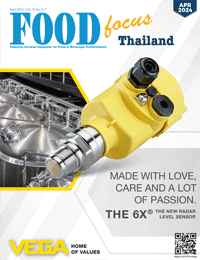การตรวจสอบสารก่อภูมิแพ้ตกค้างในไลน์ผลิตอาหาร The Detection of Residual Allergens in Food Production Line
1598 Views |

การตรวจสอบสารก่อภูมิแพ้ตกค้างในไลน์ผลิตอาหาร
The Detection of Residual Allergens in Food Production Line
By: ดร. นฤมล จอมมาก
Naruemon Jommark, Ph.D.
Division of Food Safety Management and Technology
Faculty of Science and Technology
Rajamangala University of Technology Krungthep
naruemon.j@mail.rmutk.ac.th
การตรวจหาโปรตีนรวมที่ตกค้างบนพื้นผิวสัมผัสอาหาร
การตรวจหาโปรตีนรวมเป็นวิธีการตรวจคัดกรองโปรตีนที่เป็นสารก่อภูมิแพ้จากอาหารที่ตกค้างบนพื้นผิวหลังจากการทำความสะอาดซึ่งไม่สามารถมองเห็นได้ด้วยตาเปล่า โดยทั่วไปบริเวณพื้นผิวสำหรับการเก็บตัวอย่างโปรตีนจะไม่ได้กำหนดขนาดพื้นที่มาตรฐานไว้อย่างเฉพาะเจาะจง แต่ควรเป็นบริเวณที่มีความเสี่ยงต่อการปนเปื้อน ได้แก่ ซอกมุม ตะกร้า และบริเวณที่เข้าถึงยาก โดยขนาดพื้นที่อาจขึ้นอยู่กับความเหมาะสม สำหรับพื้นผิวเรียบจะกำหนดขนาดพื้นที่ในการเก็บตัวอย่างอยู่ที่ 10 เซนติเมตร x 10 เซนติเมตร ซึ่งสามารถดำเนินการโดยลากหัวสวอปแบบสลับไปมาจนทั่วบริเวณที่สัมผัสอาหาร หลังจากนั้นกดด้ามจับให้ปลายก้านสวอปสัมผัสกับน้ำยาทดสอบซึ่งจะมาพร้อมกับชุดทดสอบโปรตีน รอจนกระทั่งสารละลายเปลี่ยนสีและอ่านผลจากการเปรียบเทียบสีของหัวสวอปหรือแถบสีที่มากับชุดทดสอบ หากไม่มีโปรตีนตกค้าง สีของหัวสวอปจะยังคงเป็นสีเดิม แต่หากสีของหัวสวอปเปลี่ยนไปจากสีเดิม เช่น จากสีเหลืองเป็นสีเขียว แสดงว่ามีโปรตีนหลงเหลืออยู่บริเวณนั้น เนื่องจากโปรตีนได้ทำปฏิกิริยากับสารบ่งชี้ จึงทำให้เกิดการเปลี่ยนสี ซึ่งระดับความเข้มของสีที่เปลี่ยนแปลงไปจะขึ้นอยู่กับปริมาณของโปรตีนที่ตกค้าง เช่น จากสีเหลืองเปลี่ยนไปเป็นสีเขียวอ่อน สีเขียว และสีเขียวเข้ม ตามลำดับ นอกจากการใช้ชุดทดสอบดังกล่าวแล้ว การตรวจหาโปรตีนตกค้างในห้องปฏิบัติการสามารถทดสอบได้ด้วยปฏิกิริยาไบยูเร็ต ซึ่งหากมีโปรตีนตกค้างอยู่บนพื้นผิวจะเกิดปฏิกิริยาเป็นสารสีม่วง
Detection of residual total proteins on food contact surfaces
Total protein detection is a screening method for identifying allergenic protein residue invisibly on surfaces after cleaning. Generally, this method is intended to determine the test by swabbing it on the surface, where there is no standardized testing area for obtaining swab samples. However, the sample collection area should be the critical points, such as corners, baskets, and hard-to-reach areas, where properly applied, depending upon the equipment. Thoroughly swab area is a standard 10 cm by 10 cm for a typical flat surface in one direction and then in the opposite direction. After the swabbing, the swab head is pressed against the extraction solution, obtained with the commercial protein test kit. The color change is observed in the presence of protein residue. On the other hand, the swab color remains unchanged in the absence of protein residue. The swab color may change from yellow to light green, green, and dark green, indicating detectable protein residue. Residual protein on surfaces was also used to determine protein in the laboratory using a biuret reaction. If the sample is collected on the surface and reacted, it creates a purple substance, indicating the presence of protein residue on the surface.






